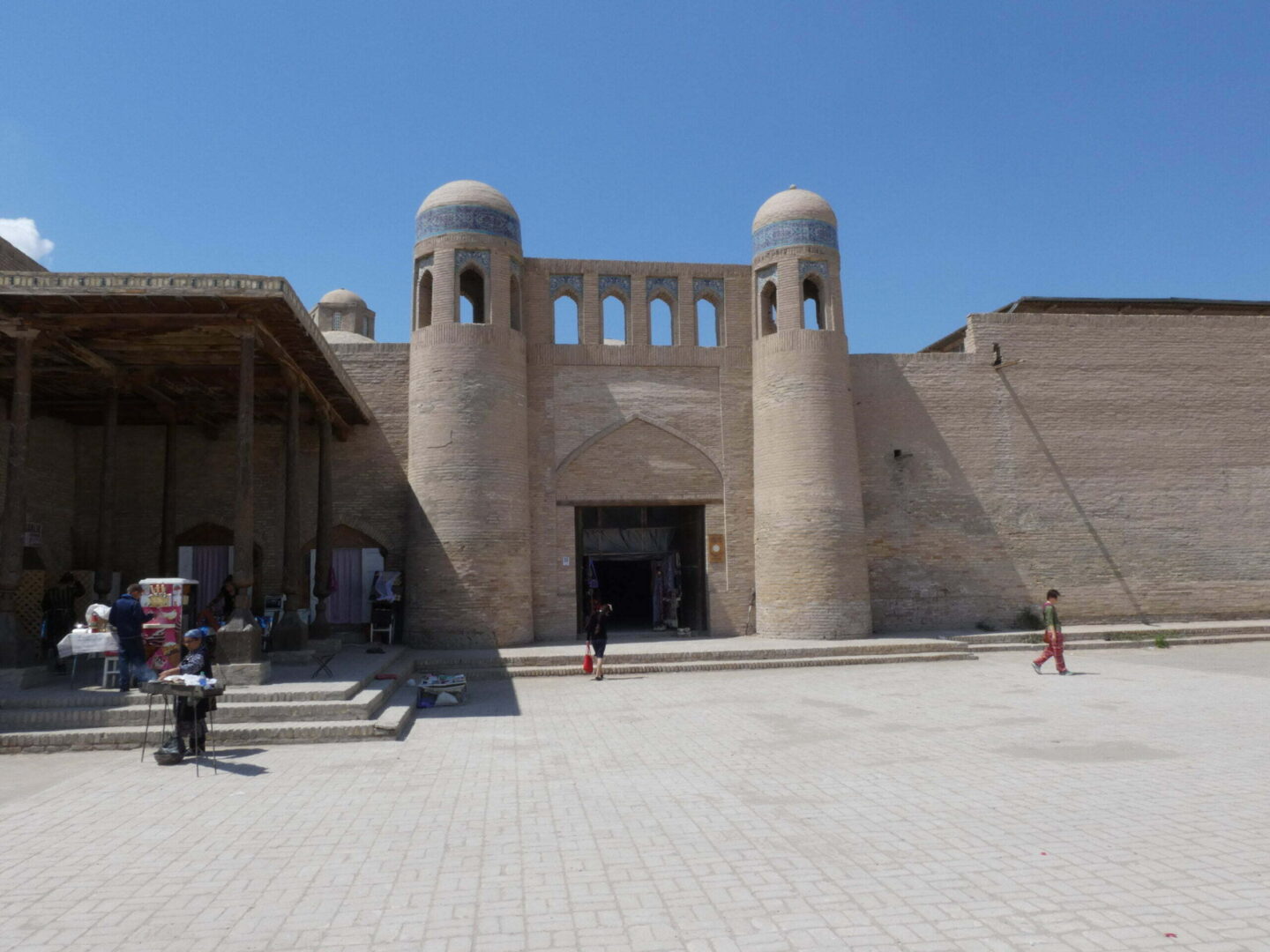Khiva - Tim Allakuli Khan
After Allakuli-Khan built a caravanserai in Khiva in 1832-1833, which had an inn, a storehouse and market stalls, it became clear that the covered bazaar – Tim was needed, which was added to the caravanserai in 1836-1838. It successfully combined the functions of city gate, bazaar and “lobby” of the caravanserai. Nowadays, the caravanserai and the Tim look like a single structure.

The trade in the Tim took place in the side shops, where the merchants stood with their goods. Here one could buy not only local goods, but also Russian or English fabrics, silk scarves, boots from Bukhara, crockery from China, and so on. The rais (chairman) checked the correctness of the scales and supervised the ordering. He was empowered to settle disputes on the spot with taxes and blows. A fee was charged at the gate for import and export of goods. The dimensions of Tim Allakuli-Khan in Khiva are: 74 x 26.5 metres, diameter of the domes from 9.5 to 6 metres.
Allakuli-Khan (1794-1842), ruled in the years 1825-1842 and was the fifth ruler of the Uzbek Kungrat dynasty in the Khanate of Khiva. He came to power after the death of his father Muhammad Rahim-Khan I (1806-1825).
During the reign of Allakuli Khan in Khiva, the Tash-Hovli Palace (1830-1832), the Medrese (1834-1835), the Caravanserai (1832-1833), Tim (Trade Dome), the mosques Saitbay, Ak Mosque and others were built.
In 1842, Khiva was surrounded by a six-kilometre-long outer wall (Dishan-Kala), which was built in 30 days.
During the reign of Allakuli Khan in Khiva, the poets like Muniz Khorezmi, Rojih, Dilavar, Syed Mirza Junaid, Mirza Masiho created art. The historians Muniz Khorezmi and Agakhi wrote the history of Khorezm.
After the death of Allakuli Khan, power in Choresm passed to his son, Rahimkuli Khan (1842-1845).
